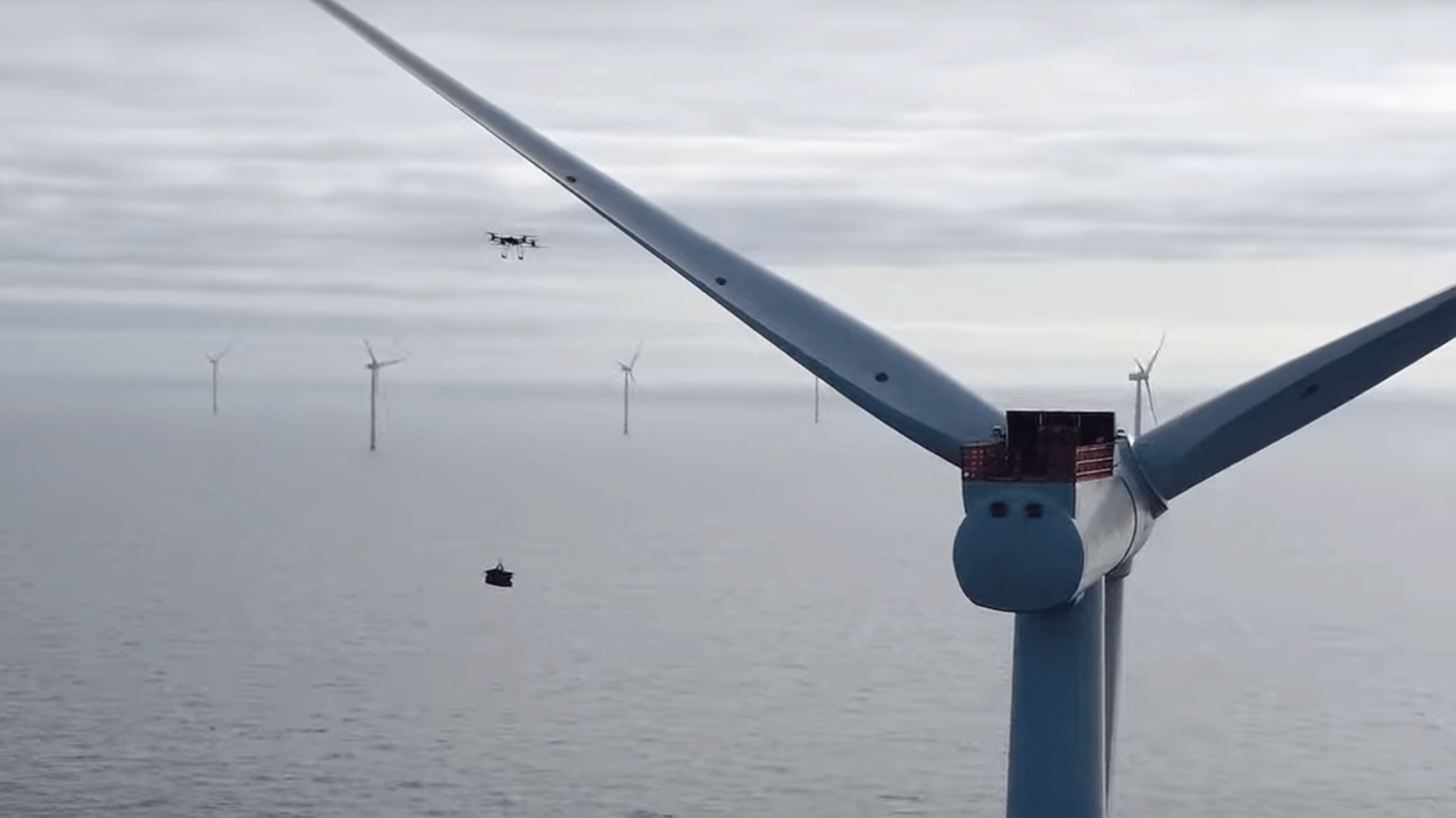

An autonomous drone with the wingspan of an albatross is now trialing cargo restocks for a giant offshore wind farm in the North Sea. Overseen by the Danish wind power company Ørsted, the 128-pound unmanned aerial vehicle (UAV)—roughly the weight of “a large baby giraffe”—is meant to cut down on time and costs, while also improving overall operational safety, and is billed as the first of its kind in the world.
“Drones mean less work disturbance as turbines don’t have to be shut down when cargo is delivered,” Ørsted’s October 30 announcement states. “They avoid risk, making it safer for personnel working on the wind farm and minimize the need for multiple journeys by ship, reducing carbon emissions and climate change impacts.”

In a video posted to the social media platform, X, the hefty drone is shown launching from a cargo ship’s deck while towing a large orange bag suspended by a cable beneath the UAV. From there, the transport soars over a few hundred feet of North Sea waters to hover above one of Hornsea 1’s 7-megawatt wind turbines. Once in place, the drone carefully lands its cargo on the platform before releasing its tether to return to its crew transfer vessel, where human pilots have overseen the entire process.
While Ørsted didn’t name its drone partner in the project announcement, additional promotional materials provided by the company confirm it is a Skylift, a UK-based business focusing on offshore wind farm deliveries.
[Related: Atlantic City’s massive offshore wind farm project highlights the industry’s growing pains.]
“[W]e want to use our industry leading position to help push forward innovations that reduce costs and maximize efficiency and safety in the offshore wind sector,” Mikkel Haugaard Windolf, head of Ørsted’s offshore logistics project, said via the company’s October 30 reveal, adding that, “Drone cargo delivery is an important step in that direction.”
Ørsted’s Hornsea 1 wind farm consists of 174 turbines installed across over 157-square-miles in the North Sea. Generating roughly 1.7Gw of power, the farm’s electricity is enough to sustainably power over 1 million homes in the UK.
Despite the company’s multiple Hornsea wind farm successes, Ørsted has encountered significant setbacks during attempts to expand into the US market. Earlier this month, local officials in Cape May County, NJ, filed a lawsuit attempting to block construction of a 1.1 gigawatt project involving nearly 100 turbines off the coast of Atlantic City, citing regulatory sidesteps and environmental concerns. In an email to PopSci at the time, the American Clean Power Association’s Director of Eastern Region State Affairs described the lawsuit as “meritless,” and reiterated that offshore wind energy production remains “one of the most rigorously regulated industries in the nation.”
According to a 2015 report from the US Department of Energy, wind farms could supply over a third of the country’s sustainable electricity by 2050.
